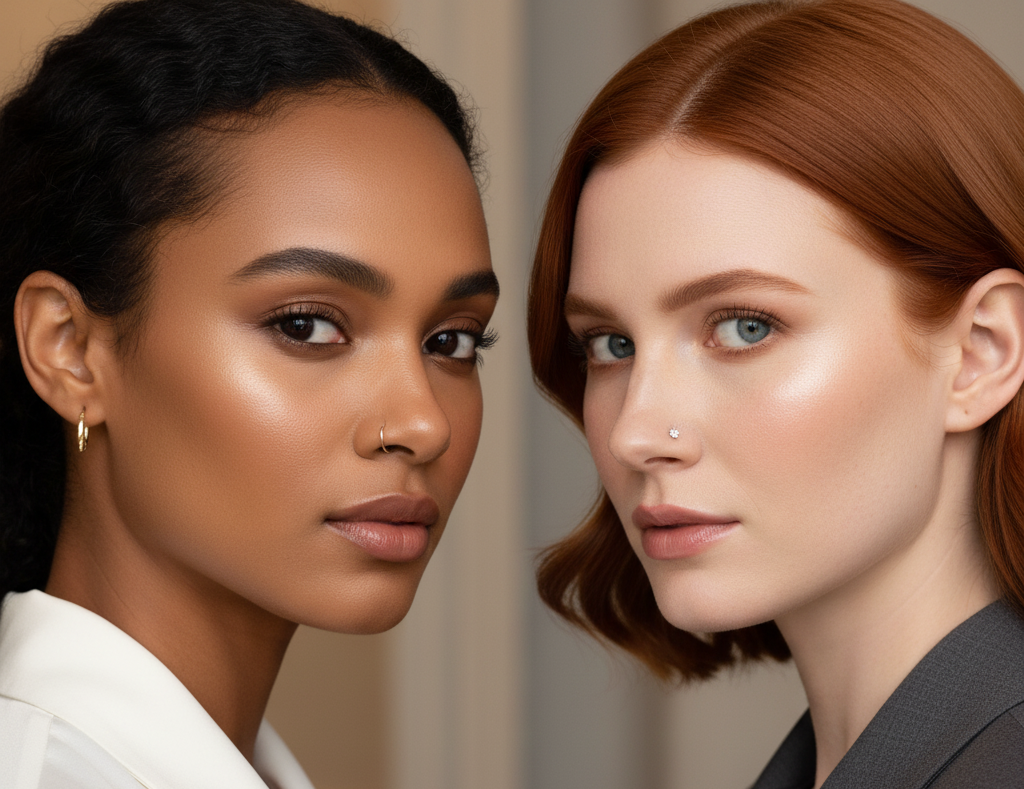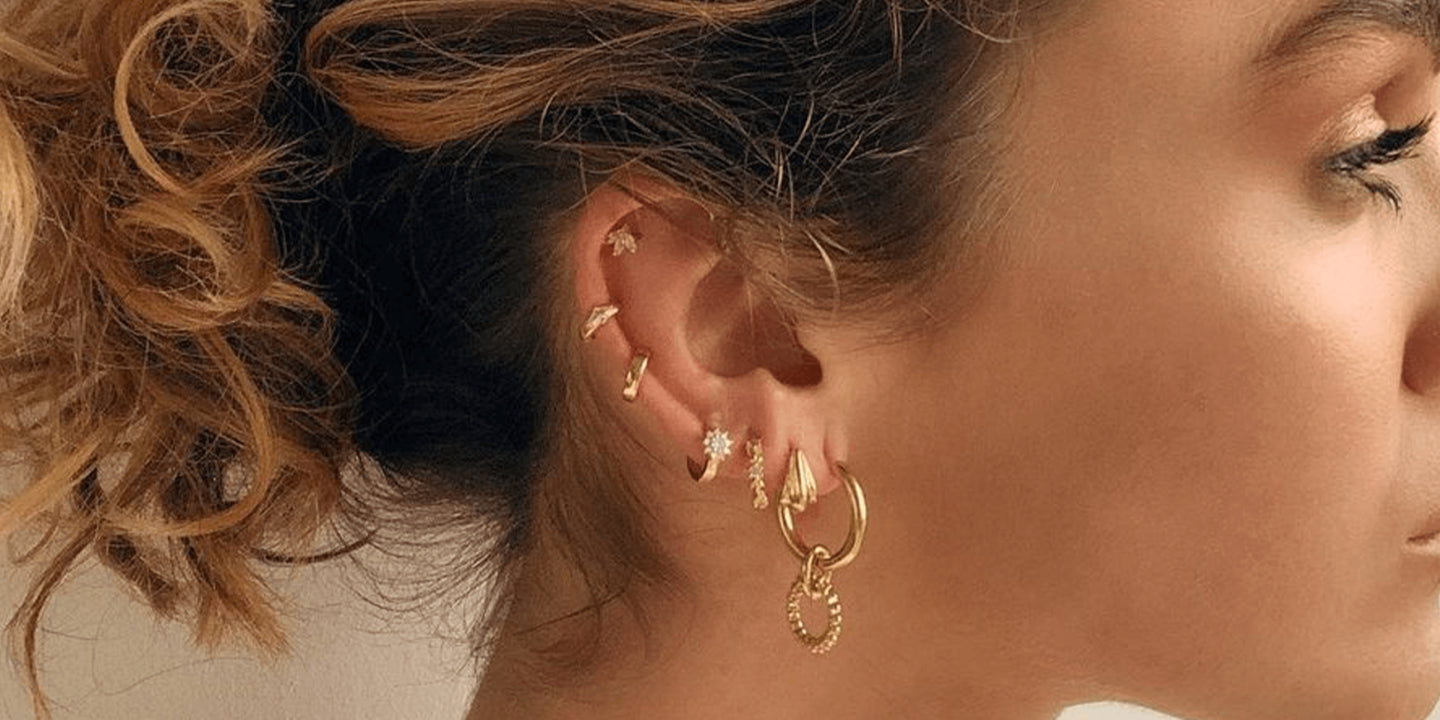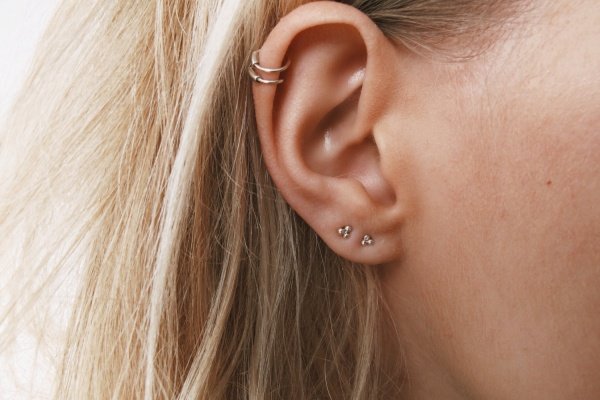Free shipping for USA orders over $65
Free shipping for USA orders over $65
Shop Jewelry
- 14K Gold Jewelry
- Sterling Silver Jewelry
- Titanium Jewelry
- Niobium Jewelry
- Belly Rings
- Cartilage Earrings
- Drop Earrings
- Eyebrow Rings
- Hoop Earrings
- Huggie Earrings
- Industrial Barbells
- Labret Studs | Flat back
- Lippy Loop Labret
- LGBTQ+ Pride Jewelry
- Nipple Jewelry
- Nose Jewelry
- Pregnancy Belly Ring
- Septum Jewelry
- Stud Earrings
- Tongue Barbells
- Fake Piercings
- Crescents / Pinchers
- Micro Barbell
- Dermals / Surface Barbells
- Toe Rings
- VCH Jewelry
- Belly Rings - Internally Threaded
- Body Jewelry Parts - Internally Threaded
- Captive Bead Ring - Internally Threaded
- Cartilage Barbells - Internally Threaded
- Curved Barbell - Internally Threaded
- Eyebrow Rings - Internally Threaded
- Horseshoe Circular Barbell - Internally Threaded
- Insertion Tapers - Internally Threaded
- Labret - Internally Threaded
- Nipple Jewelry - Internally Threaded
- Retainers - Internally Threaded
- Straight Barbell - Internally Threaded
- Tunnels - Internally Threaded
- 14K Gold Jewelry
- Sterling Silver Jewelry
- Titanium Jewelry
- Niobium Jewelry
- Belly Rings
- Cartilage Earrings
- Drop Earrings
- Eyebrow Rings
- Hoop Earrings
- Huggie Earrings
- Industrial Barbells
- Labret Studs | Flat back
- Lippy Loop Labret
- LGBTQ+ Pride Jewelry
- Nipple Jewelry
- Nose Jewelry
- Pregnancy Belly Ring
- Septum Jewelry
- Stud Earrings
- Tongue Barbells
- Fake Piercings
- Crescents / Pinchers
- Micro Barbell
- Dermals / Surface Barbells
- Toe Rings
- VCH Jewelry
- Belly Rings - Internally Threaded
- Body Jewelry Parts - Internally Threaded
- Captive Bead Ring - Internally Threaded
- Cartilage Barbells - Internally Threaded
- Curved Barbell - Internally Threaded
- Eyebrow Rings - Internally Threaded
- Horseshoe Circular Barbell - Internally Threaded
- Insertion Tapers - Internally Threaded
- Labret - Internally Threaded
- Nipple Jewelry - Internally Threaded
- Retainers - Internally Threaded
- Straight Barbell - Internally Threaded
- Tunnels - Internally Threaded
Lobe Piercing: A Complete Guide to the Most Popular Ear Piercing
9 min read

Lobe piercing is a type of ear piercing that involves piercing the lower part of the earlobe, usually near the edge. Lobe piercings are very common and widely accepted in many cultures and societies. They are also easy to heal and care for, making them a great choice for beginners and experienced piercers alike.
Lobe piercings can be done with various types of jewelry, such as studs, hoops, rings, barbells, and plugs. They can also be combined with other ear piercings, such as cartilage piercings, to create unique and stylish designs. Lobe piercings are versatile and customizable, allowing you to express your personality and preferences.
Common Sizes and Jewelry Types for Lobe Piercing
The size of your lobe piercing will depend on the gauge (thickness) of the needle and jewelry that you choose. The most common gauge for lobe piercing is 20G or 18G, which are about 0.8mm or 1mm thick respectively. However, some people may opt for larger gauges, such as 16G or 14G, which are about 1.2mm or 1.6mm thick respectively.
The length or diameter of your jewelry will depend on the size and shape of your earlobe. The most common length for lobe piercing studs is 6mm or 1/4 inch, while the most common diameter for lobe piercing hoops or rings is 8mm or 5/16 inch. However, some people may prefer longer or shorter studs, or larger or smaller hoops or rings.
The type of jewelry that you choose for your lobe piercing will depend on your personal style and preference. There are many options available, such as:
Earring studs: These are small pieces of jewelry that have a post that goes through the piercing hole and a back that secures it in place. Earring studs can have various designs on the front, such as balls, gems, pearls, flowers, stars, etc. Earring studs are simple and elegant, and they can be worn with any outfit.
Hoops: These are circular pieces of jewelry that go through the piercing hole and close with a clasp or a hinge. Hoops can have various sizes, shapes, colors, and patterns. Hoops are fun and fashionable, and they can add some movement and flair to your look.
Rings: These are similar to hoops, but they do not close completely. Instead, they have a gap where the ends meet. Rings can have various styles, such as seamless rings, captive bead rings (CBR), segment rings, etc. Rings are edgy and cool, and they can give your lobe piercing a more noticeable appearance.
Barbells: These are straight pieces of jewelry that have a ball or a gem on each end. One end is fixed to the barbell, while the other end can be unscrewed to insert or remove the jewelry. Barbells can have various lengths and thicknesses. Barbells are sleek and modern, and they can add some contrast and dimension to your lobe piercing.
Plugs: These are solid pieces of jewelry that fill up the entire piercing hole. Plugs can have various shapes, such as round plugs, oval plugs, or square plugs. Plugs can have various sizes, colors, materials, and patterns. Plugs are bold and striking, and they can show off your stretched lobes.
Tunnels: These are hollow pieces of jewelry that leave the piercing hole visible. Tunnels can have various shapes, such as round tunnels, teardrop tunnels, or square tunnels. Tunnels can have various sizes, colors, materials, and patterns. Tunnels are trendy and eye-catching, and they can give your lobe piercing a more spacious look.
You can mix and match different types of jewelry for your lobe piercing, or you can wear matching pairs for a more symmetrical look. You can also choose jewelry that complements your skin tone, hair color, eye color, or outfit.
Jewelry Materials for Initial and Healed Lobe Piercing
The material of your jewelry is very important for your lobe piercing, especially for the initial piercing. You want to choose a material that is hypoallergenic, non-porous, smooth, and easy to clean. Some of the best materials for initial lobe piercing are:
Titanium: This is a metal that is very lightweight, strong, durable, and resistant to corrosion. Titanium is also biocompatible, meaning that it does not cause allergic reactions or irritations. Titanium is one of the safest materials for lobe piercing, and it comes in various colors and finishes.
Surgical steel: This is a metal that is made of stainless steel with a high level of chromium and nickel. Surgical steel is also biocompatible, meaning that it does not cause allergic reactions or irritations. Surgical steel is another safe material for lobe piercing, and it has a shiny and sleek appearance.
Gold: This is a metal that is very precious, valuable, and beautiful. Gold is also biocompatible, meaning that it does not cause allergic reactions or irritations. Gold is a luxurious material for lobe piercing, and it has a warm and radiant glow. However, gold is also very soft and prone to scratches and dents. You should only choose gold that is at least 14k or higher for lobe piercing.
Glass: This is a material that is made of silica with various additives. Glass is also biocompatible, meaning that it does not cause allergic reactions or irritations. Glass is a smooth and glossy material for lobe piercing, and it comes in various colors and shapes. Glass is also very easy to sterilize and maintain.
You should avoid materials that are cheap, low-quality, porous, or contain harmful substances for your initial lobe piercing. Some of the worst materials for initial lobe piercing are:
Acrylic: This is a material that is made of plastic with various additives. Acrylic is not biocompatible, meaning that it can cause allergic reactions or irritations. Acrylic is also porous, meaning that it can harbor bacteria and germs. Acrylic is a cheap and flimsy material for lobe piercing, and it can break or crack easily.
Wood: This is a material that is made of natural plant fibers with various treatments. Wood is not biocompatible, meaning that it can cause allergic reactions or irritations. Wood is also porous, meaning that it can absorb moisture and bacteria. Wood is a natural and organic material for lobe piercing, and it has a warm and earthy feel. However, wood is also very sensitive and prone to cracking and warping.
For healed lobe piercing, you can experiment with different materials that suit your style and comfort. Some of the popular materials for healed lobe piercing are:
Acrylic: This is a material that is made of plastic with various additives. Acrylic is not biocompatible, meaning that it can cause allergic reactions or irritations. However, acrylic is also lightweight, flexible, and affordable. Acrylic is a colorful and playful material for lobe piercing, and it comes in various shapes and sizes.
Wood: This is a material that is made of natural plant fibers with various treatments. Wood is not biocompatible, meaning that it can cause allergic reactions or irritations. However, wood is also natural, organic, and eco-friendly. Wood is a warm and earthy material for lobe piercing, and it has a unique and rustic charm.
Stone: This is a material that is made of natural minerals with various treatments. Stone is biocompatible, meaning that it does not cause allergic reactions or irritations. Stone is also smooth, solid, and durable. Stone is a beautiful and elegant material for lobe piercing, and it has a cool and soothing feel.
Silicone: This is a material that is made of synthetic polymers with various additives. Silicone is biocompatible, meaning that it does not cause allergic reactions or irritations. Silicone is also soft, flexible, and comfortable. Silicone is a skin-like and discreet material for lobe piercing, and it comes in various colors and textures.
You should always choose high-quality jewelry for your lobe piercing, regardless of the material. You should also clean your jewelry regularly to prevent infections and odors.
Pros and Cons of Lobe Piercing
Lobe piercing has many advantages and disadvantages that you should consider before getting one. Here are some of the pros and cons of lobe piercing:
Pros:
- Lobe piercing is very common and widely accepted in many cultures and societies. You will not face much stigma or discrimination for having a lobe piercing.
- Lobe piercing is very easy to heal and care for. You will not experience much pain or discomfort during or after the piercing process.
- Lobe piercing is very versatile and customizable. You can choose from a wide range of jewelry types, sizes, materials, colors, and designs for your lobe piercing.
- Lobe piercing is very fun and fashionable. You can express your personality and preferences with your lobe piercing.
Cons:
- Lobe piercing can cause infections or allergies if you do not clean your jewelry or piercing site properly. You should always follow the aftercare instructions given by your piercer.
- Lobe piercing can cause stretching or tearing of your earlobe if you wear heavy or large jewelry for a long time. You should always choose jewelry that fits your earlobe size and shape.
- Lobe piercing can cause scarring or keloids if you do not heal properly or if you experience trauma to your earlobe. You should always avoid touching or playing with your jewelry during healing.
- Lobe piercing can cause permanent holes in your earlobe if you stretch your lobes too much or if you remove your jewelry for a long time. You should always be careful about the size and frequency of your stretching.
Procedure and Healing Time of Lobe Piercing
The procedure of lobe piercing is very simple and quick. Here are the steps involved in getting a lobe piercing:
- First, you should choose a reputable piercer who has experience and certification in lobe piercing. You should also choose the jewelry type, size, material, color, and design that you want for your lobe piercing.
- Next, you should wash your hands with antibacterial soap and clean your earlobes with alcohol wipes. Your piercer will also wash their hands with antibacterial soap and put on gloves.
- Then, your piercer will mark the spot where they will pierce your earlobe with a pen or a marker. You should check the placement and alignment of the mark before proceeding.
- After that, your piercer will use a sterilized needle to pierce your earlobe at the marked spot. They will insert the jewelry through the needle hole and secure it with a back or a clasp.
- Finally, your piercer will clean the excess blood or fluid from your earlobe with cotton balls or swabs. They will also give you some aftercare instructions and tips to follow.
The healing time of lobe piercing varies depending on your individual healing rate, your jewelry type and material, your aftercare routine, and other factors. Generally, lobe piercing takes about 6 to 8 weeks to heal completely. However, you should not change or remove your jewelry until your piercer confirms that your lobe piercing is fully healed.
Aftercare Tips and Best Practices for Lobe Piercing
The aftercare of lobe piercing is very important to prevent infections, irritations, allergies, or other complications. You should follow the aftercare instructions given by your piercer carefully and consistently. Here are some of the aftercare tips and best practices for lobe piercing:
- Clean your lobe piercing twice a day with a saline solution or a mild antibacterial soap. You can use a spray bottle, a cotton ball, or a gauze pad to apply the solution to your piercing site. Gently wipe away any crust or discharge that may form around your jewelry. Do not use alcohol, hydrogen peroxide, iodine, or other harsh chemicals that can dry out or damage your skin.
- Avoid touching, twisting, pulling, or playing with your jewelry during healing. This can cause trauma, irritation, or infection to your piercing site. Only touch your jewelry when cleaning it with clean hands.
- Avoid sleeping on your lobe piercing during healing. This can put pressure on your jewelry and cause pain, swelling, or migration. Try to sleep on your back or on the opposite side of your piercing. You can also use a travel pillow or a donut-shaped pillow to protect your ear from contact with the pillowcase.
- Avoid swimming or submerging your lobe piercing in water during healing. This can expose your piercing site to bacteria, germs, or chemicals that can cause infection or irritation. You should also avoid hot tubs, saunas, steam rooms, or other sources of heat and moisture that can delay healing.
- Avoid wearing tight-fitting or dirty clothing, hats, helmets, headphones, earphones, or other accessories that can rub against or irritate your lobe piercing during healing. You should also avoid using hair products, cosmetics, perfumes, or other substances that can get into your piercing site and cause allergic reactions or infections.
- Eat a healthy and balanced diet and drink plenty of water during healing. This can boost your immune system and promote faster and better healing. You should also avoid smoking, drinking alcohol, taking drugs, or using medications that can affect your blood circulation or clotting ability.
- Monitor your lobe piercing for any signs of infection or complications during healing. These include excessive pain, swelling, redness, heat, pus, fever, or foul odor. If you notice any of these signs, you should contact your piercer or doctor as soon as possible. They may prescribe you some antibiotics or other treatments to clear the infection.
RebelBod.com have a wide range of jewelry types, sizes, colors, and designs to suit your preference and style. You can browse the collection of jewelry for ear lobe piercing here: https://rebelbod.com/collections/earring-studs-earlobe-earrings
You can also find more information on body piercing types here: https://rebelbod.com/collections/body-piercing-types
And more information on body jewelry types here: https://rebelbod.com/collections/body-jewelry-type
If you are looking for high-quality, affordable, and stylish jewelry for your piercing, you should check out RebelBod.com. RebelBod.com is an online store that specializes in body jewelry for all types of piercings. RebelBod.com have a wide range of jewelry types, sizes, materials, colors, and designs for your lobe piercing. Whether you want simple studs, fun hoops, cool rings, sleek barbells, bold plugs, or trendy tunnels, RebelBod.com has it all.
RebelBod.com offers jewelry that is made of hypoallergenic, non-porous, smooth, and easy to clean materials, such as titanium, surgical steel, gold, and glass. RebelBod.com also have jewelry that is made of acrylic, wood, stone, and silicone for healed piercing. RebelBod.com have jewelry that suits your skin tone, hair color, eye color, or outfit and jewelry that complements your personality and preferences.
RebelBod.com is your one-stop shop for all your body piercing jewelry needs. Visit RebelBod.com today and browse the amazing collection of jewelry for your body piercing!
Also in Body Piercing
Categories
Recent Articles
- Nose Ring vs Nose Stud: Which Nose Piercing Is Right for You?
- The Ultimate Guide on Hoop Earrings: Huggies, Wire Loop Earrings, Hinged Hoop Earrings, Fixed Bead, Rings Captive Bead, Rings
- Double Helix Piercing: How to Rock Two Hoops on Your Ear
- Double Ear Piercing: A Complete Guide - Everything You Need to Know
- Auricle Piercing : A Guide to This Stylish Cartilage Piercing
- Tragus Piercing: Everything You Need to Know About This Trendy Ear Piercing
- Ashley Piercing : Everything You Would Want To Know About This Unique And Stylish Lip Piercing
- Smiley Piercing: A Comprehensive Guide to This Oral Piercing
- Conch Piercing : Your Comprehensive Guide to A Beautiful Cartilage Ear Piercing
- Body Piercing Decisions : Considerations You Should Think About



